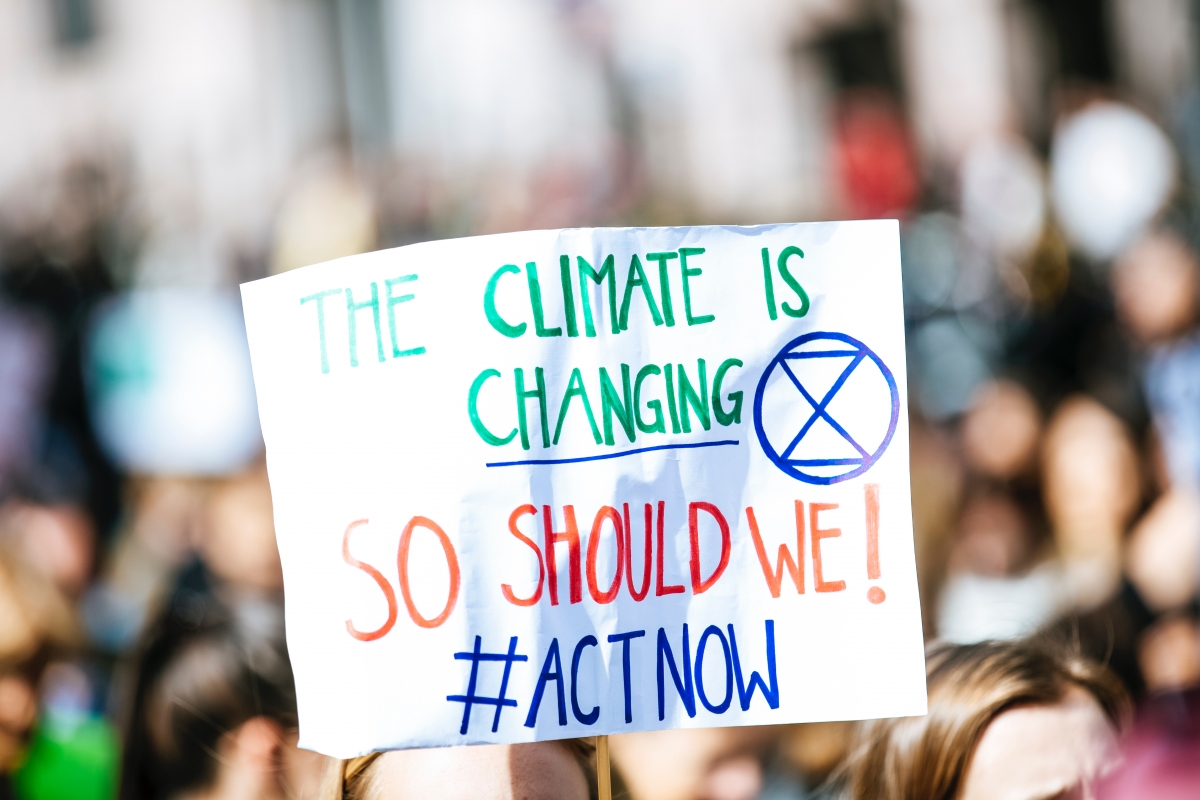Disaster is here, but the lawn looks good: Why we fail to act on the things that matter most
Why you can’t stop climate change like you stop a pandemic, and what that has to do with mowing the lawn.
We are in crisis, yet our day-to-day routines persist. While I was walking my dog the other day, I couldn’t help but notice how well-kept all the front yards looked. The lawns were mowed and the bushes were trimmed. Our ability to tend to the minor aspects of our lives while fighting to save our very way of being during a pandemic is in fact quite amazing. At any point in time, we are juggling multiple tasks, working toward multiple goals, fighting on multiple fronts. Some routine tasks are more difficult now with quarantine and social distancing—keeping in touch with friends, exercising, doing our jobs—and still we try to keep at them the best we can.
So, arguably we can maintain things in our lives while also trying to ward off large and unforeseeable threats. This combination of maintenance and prevention goals may be challenging, but possible. There is one important goal, however, that often manages to escape us, one that inspires very little commitment on regular days, and even less of it now: the fight against climate change. It is still there, lurking. Most human societies around the globe are now highly committed to the fight against coronavirus, but they have yet to commit to the fight against climate change. I propose that a main obstacle to the fight against climate change is that we think of it in terms of prevention, when we should really see it in terms of maintenance, like we do when mowing our lawns, and not like we do when thwarting a pandemic.
Mowing the lawn, thwarting a pandemic, and fighting climate change all have something in common – all three try to keep the things we have in our lives and our ways of living as they are (1). But mowing the lawn is also distinct from the other two. In psychological terms, “thwarting a pandemic” and “fighting climate change” are prevention goals – they focus on negative possibilities that must be avoided, and they motivate us by inducing a mental experience of threat (2, 3, 4). In contrast, mowing the lawn is a maintenance goal. In our research lab, my colleagues and I have been looking at how maintenance goals differ from prevention goals. We repeatedly find that people’s personal maintenance goals and experiences of how it feels to maintain are considerably less concerned with threat than prevention goals (5). While the motivation to prevent is higher the more people feel threatened, the motivation to maintain is higher the more people appreciate the things they have and are satisfied with them.
As the focus of a prevention goal, coronavirus has been quite successful in motivating us by arousing our sense of threat. In the last few weeks, we’ve abandoned fundamental aspects of our lives and made dramatic changes to deeply ingrained habits. Coincidentally, some of these changes reduced CO2 omissions to a degree unprecedented in the fight against climate change (6). So how did coronavirus succeed in spurring us to action where climate change has failed? One obvious reason why climate change hasn’t yet changed our ways of life, but coronavirus has, is that we don’t expect coronavirus to stick around. This means that we intend to resume traveling and socializing as we did before in the foreseeable future. We let these go only temporarily.
 Photo by Markus Spiske from Pexels
Photo by Markus Spiske from Pexels
Climate change, on the other hand, demands much more than that – a deep and permanent change. We could never eliminate the threat of climate change; all we can do is manage it, and keep the most severe consequences at bay. There is nothing we can do that would allow us to later return safely to our old ways of life. The challenge that climate change poses is inherently infinite; it is the challenge of living a balanced environmentally-friendly life. As such, it is not a prevention goal, but a maintenance goal. Importantly, this means that we’ve been looking at this all wrong. Our goal should not be to prevent climate change; that is simply impossible. Instead, our goal should be a maintenance goal – to manage climate change, to mitigate our impact on it.
As when mowing the lawn, there is not much we stand to gain from environmental maintenance. We maintain our lawns in order to continue having them; no additional benefits await us. In much the same way, when Sisyphus pulls his rock to the top of the hill, all he benefits is the continuation of his endless endeavour. Greek mythology offers a broad selection of tragic, horrifying stories, compared to which the punishment that Sisyphus gets from Zeus seems surprisingly mild. Instead of being ripped to shreds by vultures or devoured by his own relatives, Sisyphus is charged with a repetitivetask - endless repetition, endless effort, just for things to be the same. Mild as this punishment may be, it resonates with us. Sisyphus’ story is the tragedy of everyday life, portraying a struggle that no one is a stranger to. Yet despite the seeming absurdity of our endeavours, the motivation to maintain plays a crucial role in our lives. We are all committed to it at all times, even now.
It’s been hard to mobilize people to fight climate change. This might be because we are insisting on an inappropriate motivational route. The threat of a distant-future disaster (cataclysmic as it may be) likely will not lead to change. Instead of attempting to prevent climate change, we should reconsider the role of environmental maintenance in our lives, as individuals and as a society. We should stop talking about preventing disaster and start describing in detail the new ways of life that we aspire to form and sustain. This approach has been shown to be effective in other areas: Research on interventions to elicit changes in behavioral practices like smoking, weight control, and exercise, shows that success in the maintenance stage depends on appreciation of the new state, not on fearing its loss (7, 8). Environmentalism too should not be about fearing the future but about appreciating and maintaining what we have in the present. As we pride ourselves on a flawless front lawn, individuals and organizations may cultivate routines that keep carbon emissions to a minimum, taking pride in enabling the lawns of the future.
- Ecker, Y., & Gilead, M. (2018). Goal-directed allostasis: The unique challenge of keeping things as they are and strategies to overcome it. Perspectives on Psychological Science, 13, 618-633. https://doi.org/10.1177/1745691618769847
- Elliot, A. J., & Covington, M. V. (2001). Approach and avoidance motivation. Educational Psychology Review, 13, 73–92. https://doi.org/10.1023/A:1009009018235
- Lang, P. J., Bradley, M. M., & Cuthbert, B. N. (1998). Emotion, motivation, and anxiety: Brain mechanisms and psychophysiology. Biological psychiatry, 44(12), 1248-1263. https://doi.org/10.1016/S0006-3223(98)00275-3.
- Kenrick, D. T., & Shiota, M. N. (2008). Approach and avoidance motivation(s): An evolutionary perspective. In A. J. Elliot (Ed.), Handbook of Approach and Avoidance Motivation (pp. 271-285). New York: Psychology Press.
- Ecker, Y., Gilead, M., & Imhoff, R. (2020). Towards a New Terminology of Goals: Evidence for the Unique Nature of Maintenance Goals. Manuscript under review.
- Gabbatiss, J. (2020, April 30). IEA: Coronavirus impact on CO2 emissions six times larger than 2008 financial crisis. CarbonBrief Blog. https://www.carbonbrief.org/iea-coronavirus-impact-on-co2-emissions-six-....
- Rothman, A. J. (2000). Toward a theory-based analysis of behavioral maintenance. Health Psychology, 19, 64–69. https://doi.org/10.1037/0278-6133.19.Suppl1.64.
- Kwasnicka, D., Dombrowski, S. U., White, M., & Sniehotta, F. (2016). Theoretical explanations for maintenance of behaviour change: a systematic review of behaviour theories. Health Psychology Review, 10(3), 277-296. https://doi.org/10.1080/17437199.2016.1151372


